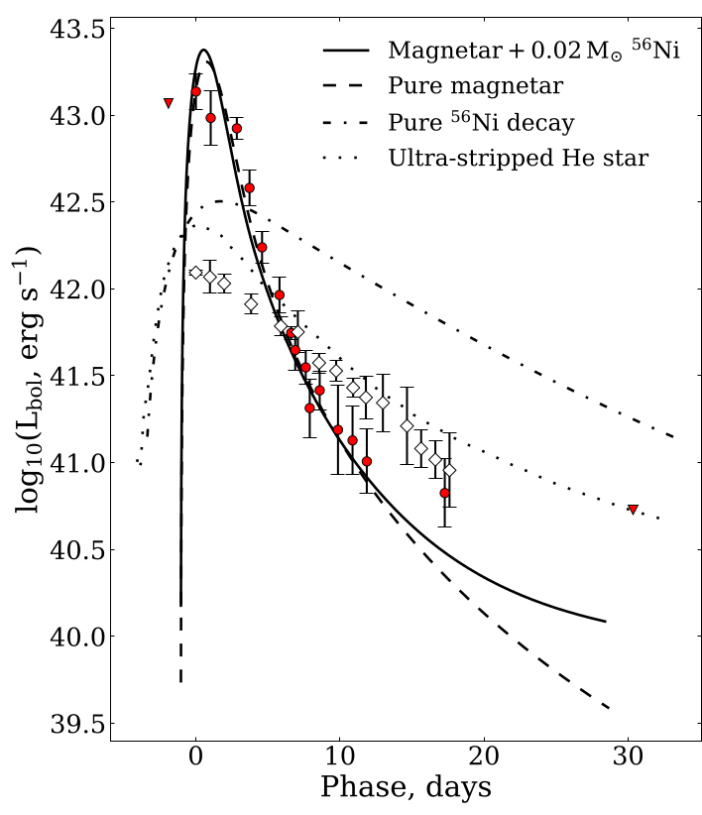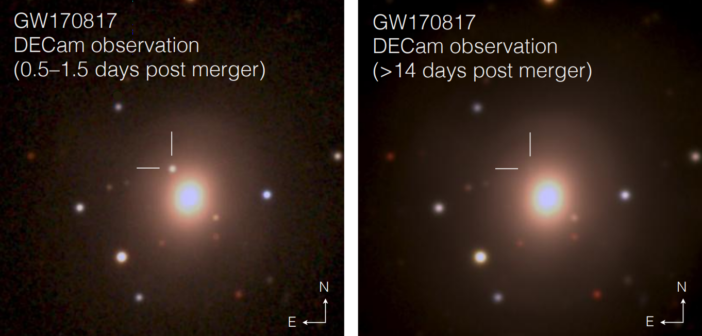A supernova-like transient was observed to decline stupendously fast. What could have caused it?
Fast Transients
“Fast transients” are objects whose brightness rises and then falls drastically, usually on the order of weeks. They are not regularly varying objects; they have more in common with supernovae, which brighten once and then fade. However, fast transients change more rapidly than supernovae do, suggesting they have different explosive progenitors.
With the advent of large astronomical surveys, fast transients are spotted more often now than ever before. The “fastest” optical fast transient is kilonova AT2017gfo — the result of the first observed binary neutron star merger. A recent study by Owen McBrien (Queen’s University Belfast) and collaborators discusses a transient that’s right on the heels of AT2017gfo in terms of the speed of its variation: a supernova-like object named SN2018kzr.
Magnetars and Nickel

The host galaxy of SN2018kzr, as seen more than two months after the transient appeared. The image was constructed using data taken by the ESO (European Southern Observatory) Faint Object Spectrograph and Camera on the New Technology Telescope. [Adapted from McBrien et al. 2019]
To explain SN2018kzr’s rise and fall, McBrien and collaborators consider mechanisms that have previously been used for fast transients. They start with the reasonable assumption that nickel-56 is involved. The isotope nickel-56 can form in the explosions associated with fast transients and supernovae, and its radioactive decay can contribute greatly to a transient’s brightness. However, SN2018kzr dims too rapidly for it to be explained by nickel-56 alone, and the decay of other radioactive isotopes don’t explain observations either.
One solution is to tweak the progenitor scenario to include a massive remnant: a rotating neutron star with a strong magnetic field, known as a magnetar. A magnetar can contribute to the energy put out by SN2018kzr by slowing its own rotation. When coupled with nickel-56 decay, a magnetar’s spin-down could explain the shape of SN2018kzr’s light curve.
Choose Your Scenario

Fits to the light curve of SN2018kzr assuming different progenitor scenarios. The red points are associated with SN2018kzr and the white diamonds are associated with another fast transient, SN2005ek. SN2005ek is better fit by the He star model, while SN2018kzr is better fit by the nickel-56–magnetar scenario. [Adapted from McBrien et al. 2019]
The first scenario isn’t favored since any remnant it produces wouldn’t rotate fast enough to explain SN2018kzr’s rapid decline. The authors favor the other scenarios, though the AIC model is on shaky ground based on previous studies.
The more fast transients we discover, the better our understanding becomes of how they form. Stay tuned!
Citation
“SN2018kzr: a rapidly declining transient from the destruction of a white dwarf,” Owen R. McBrien et al 2019 ApJL 885 L23. https://doi.org/10.3847/2041-8213/ab4dae
